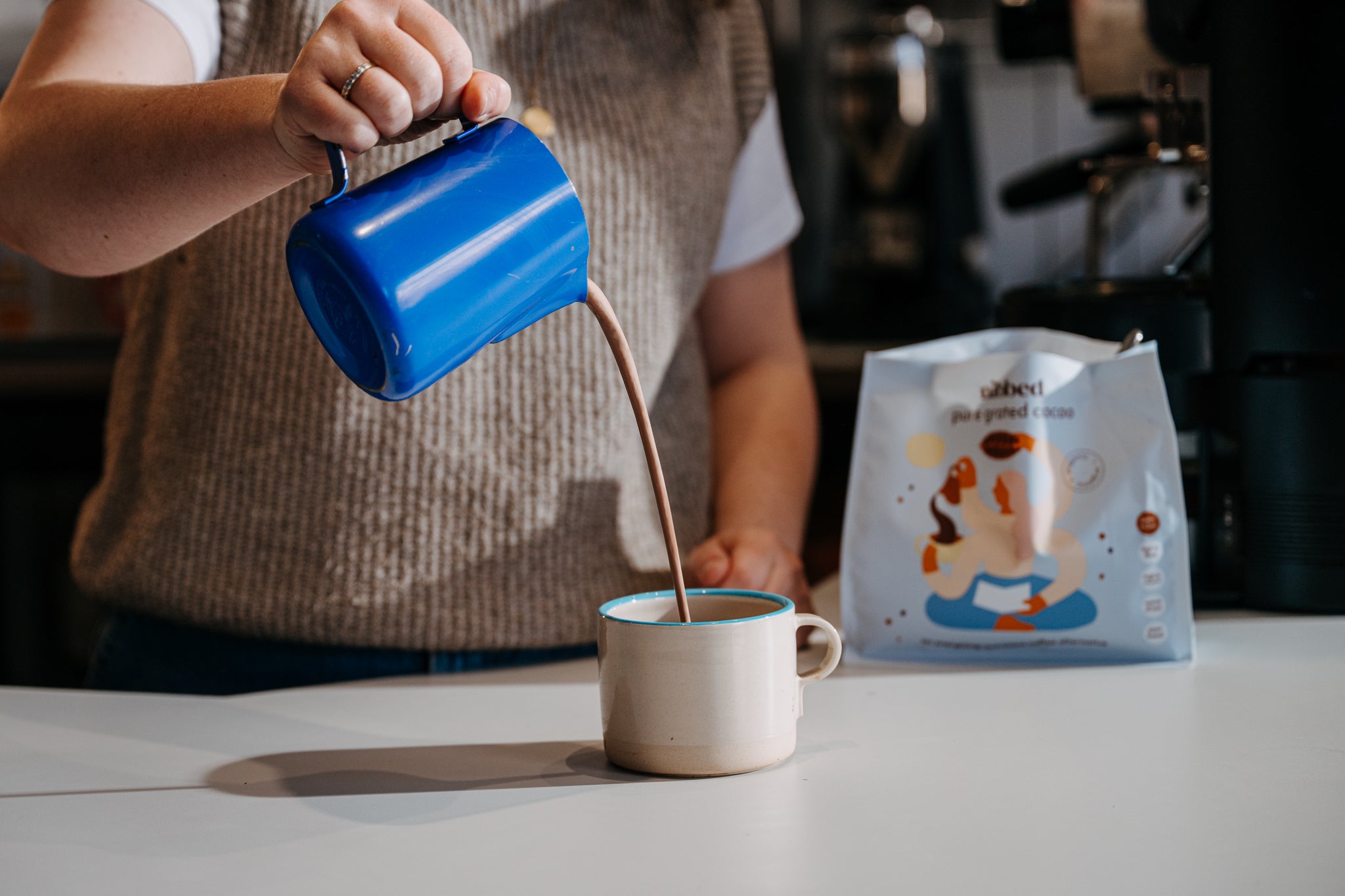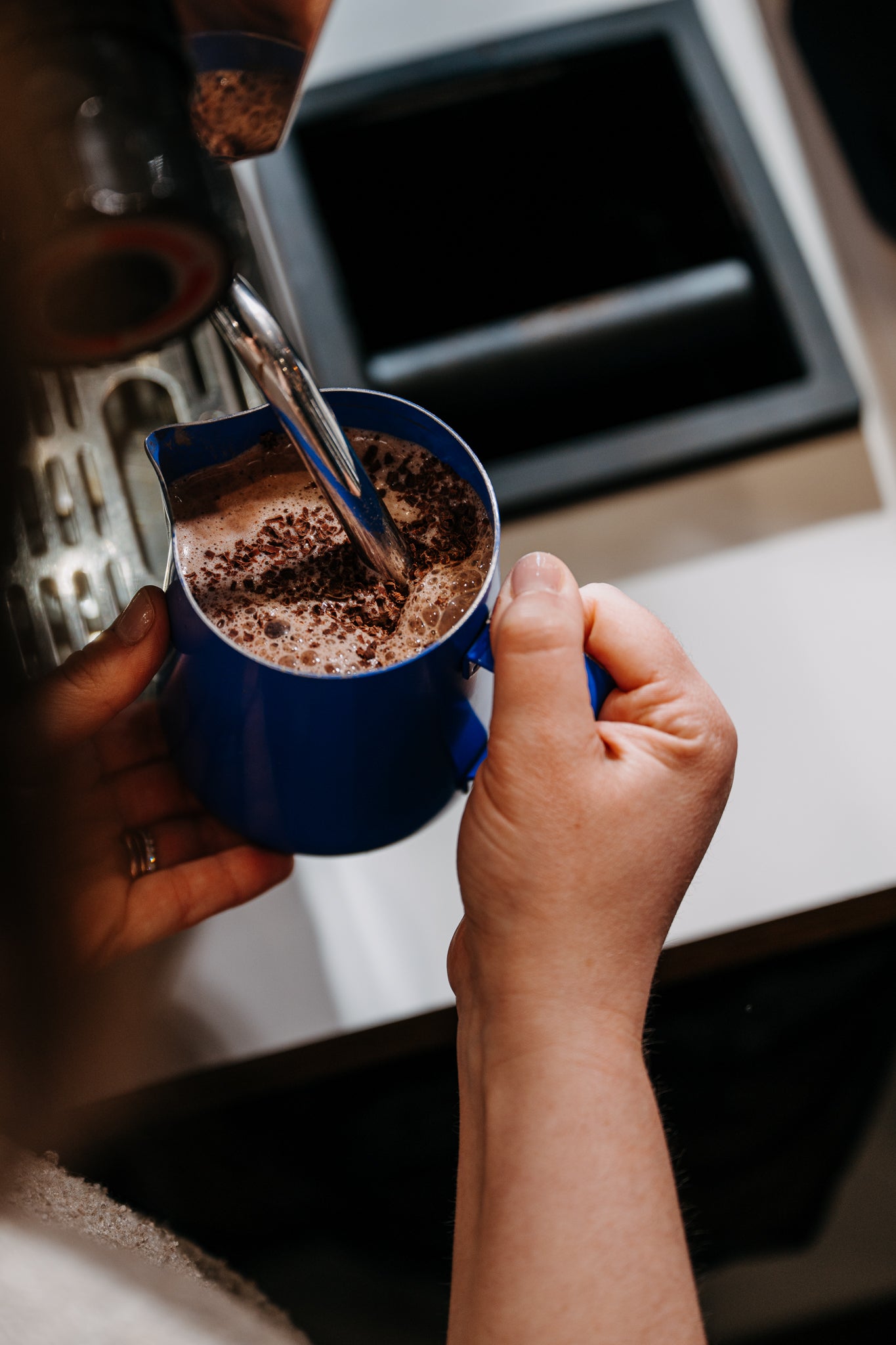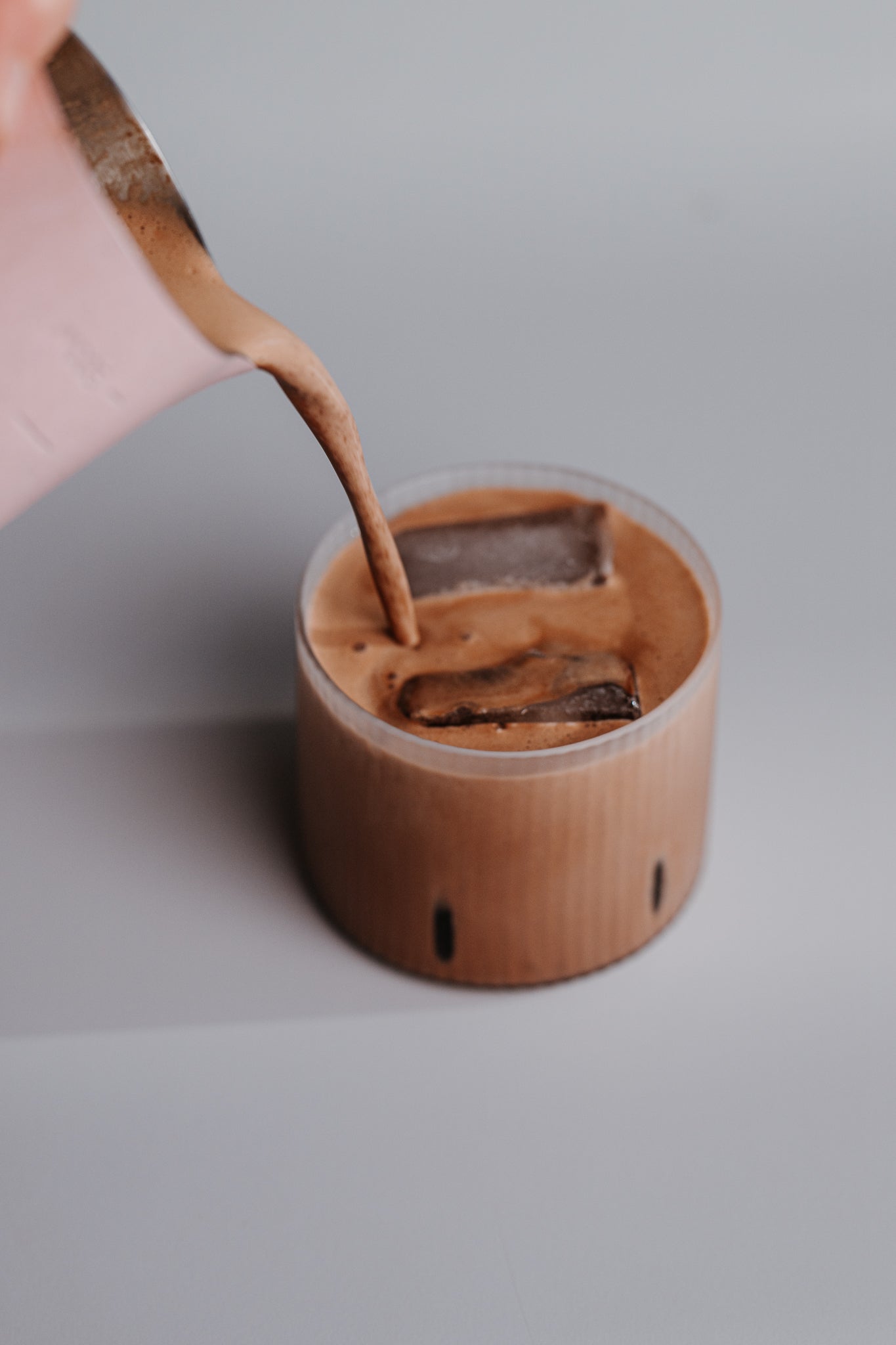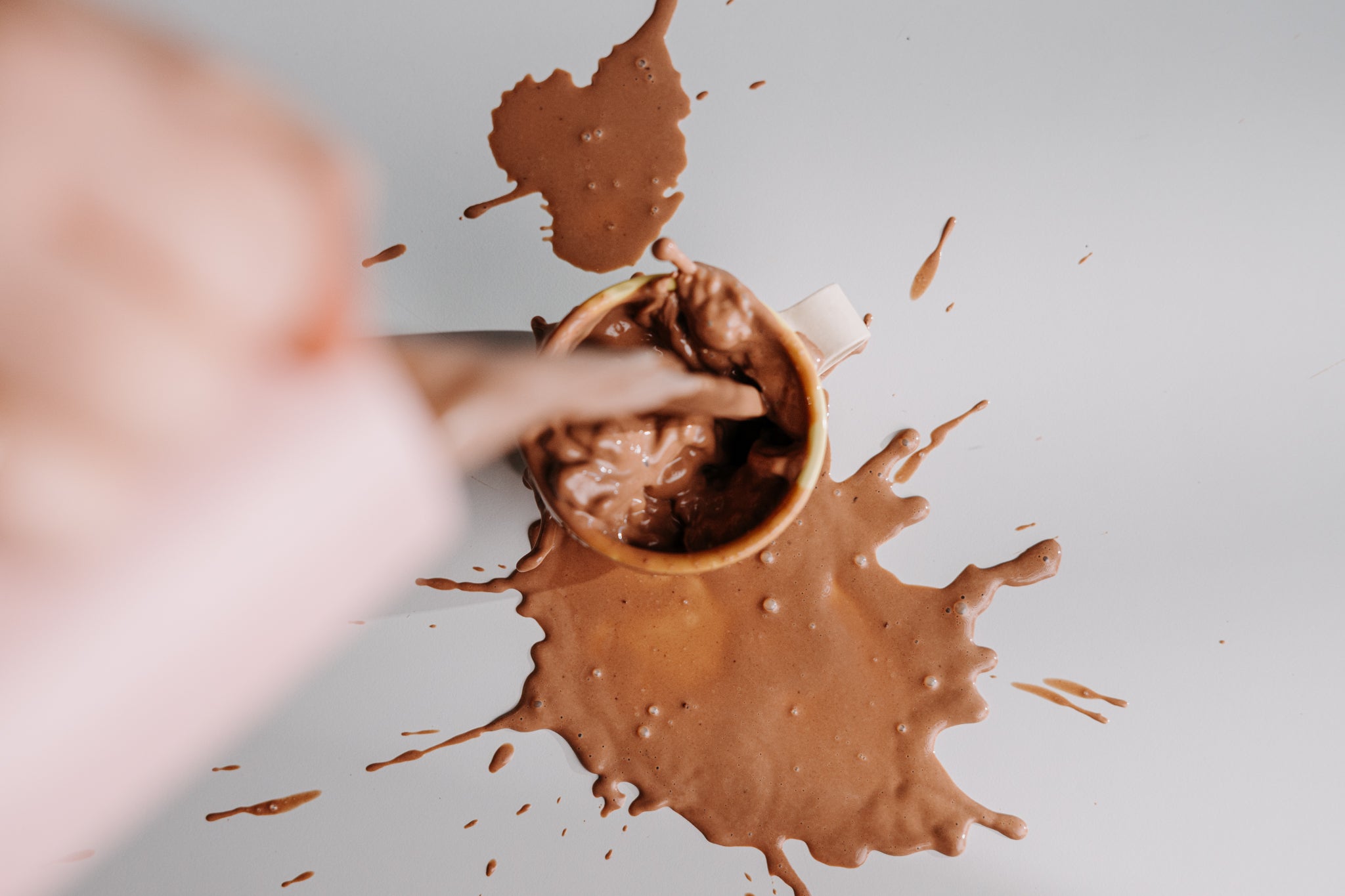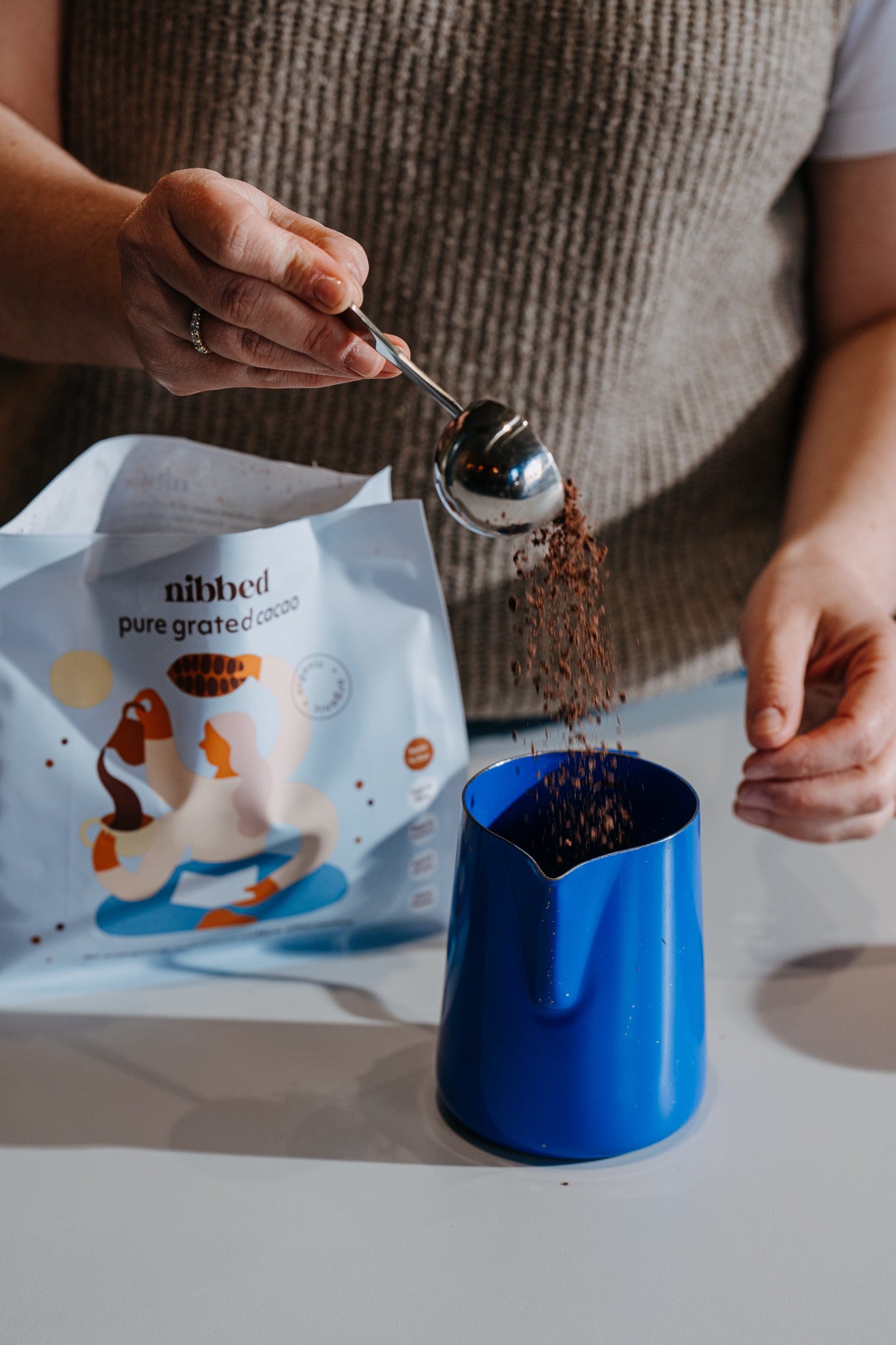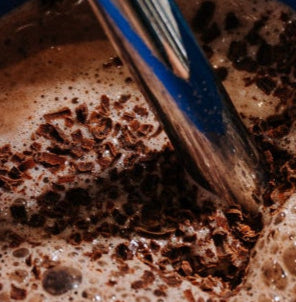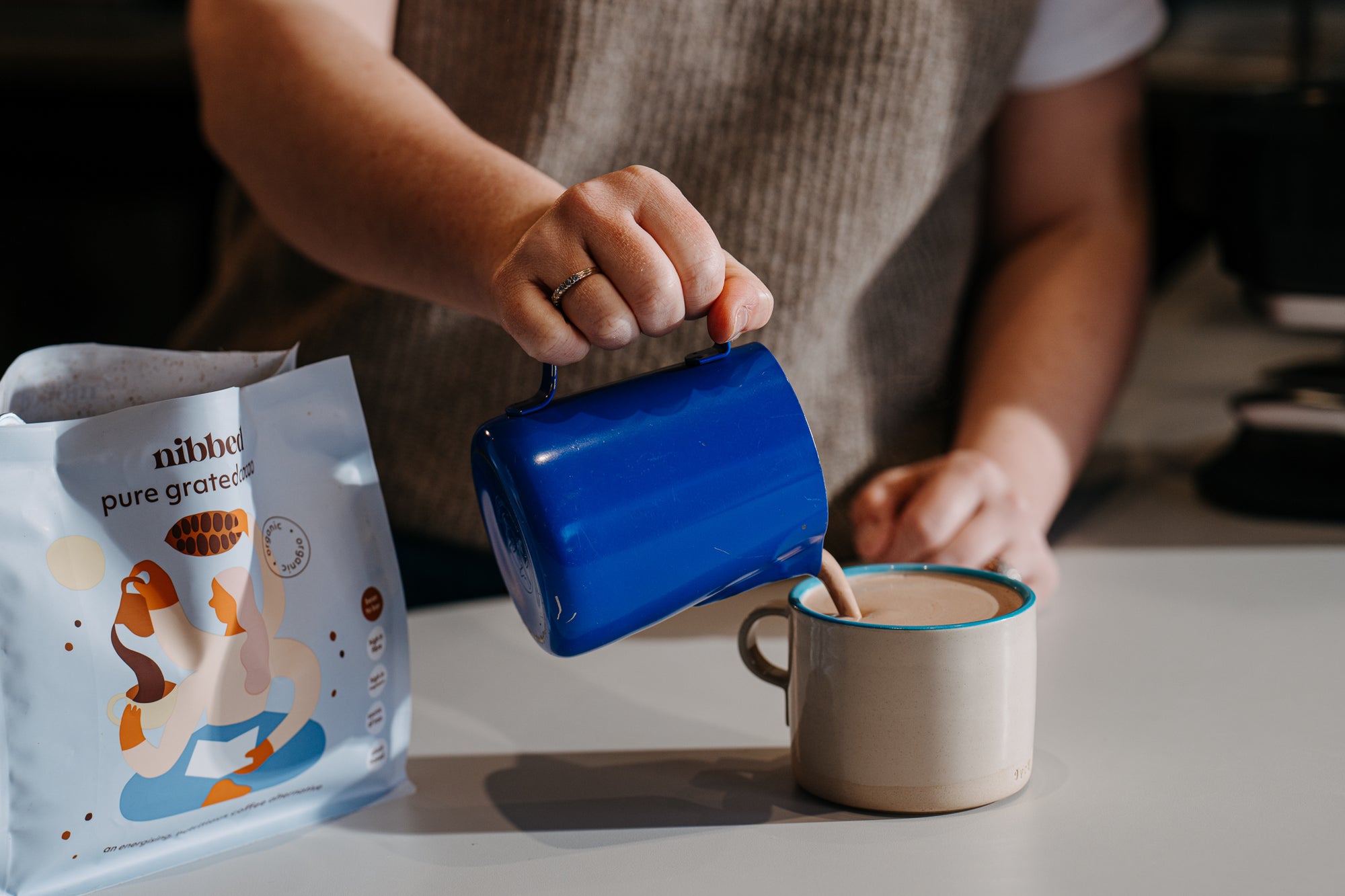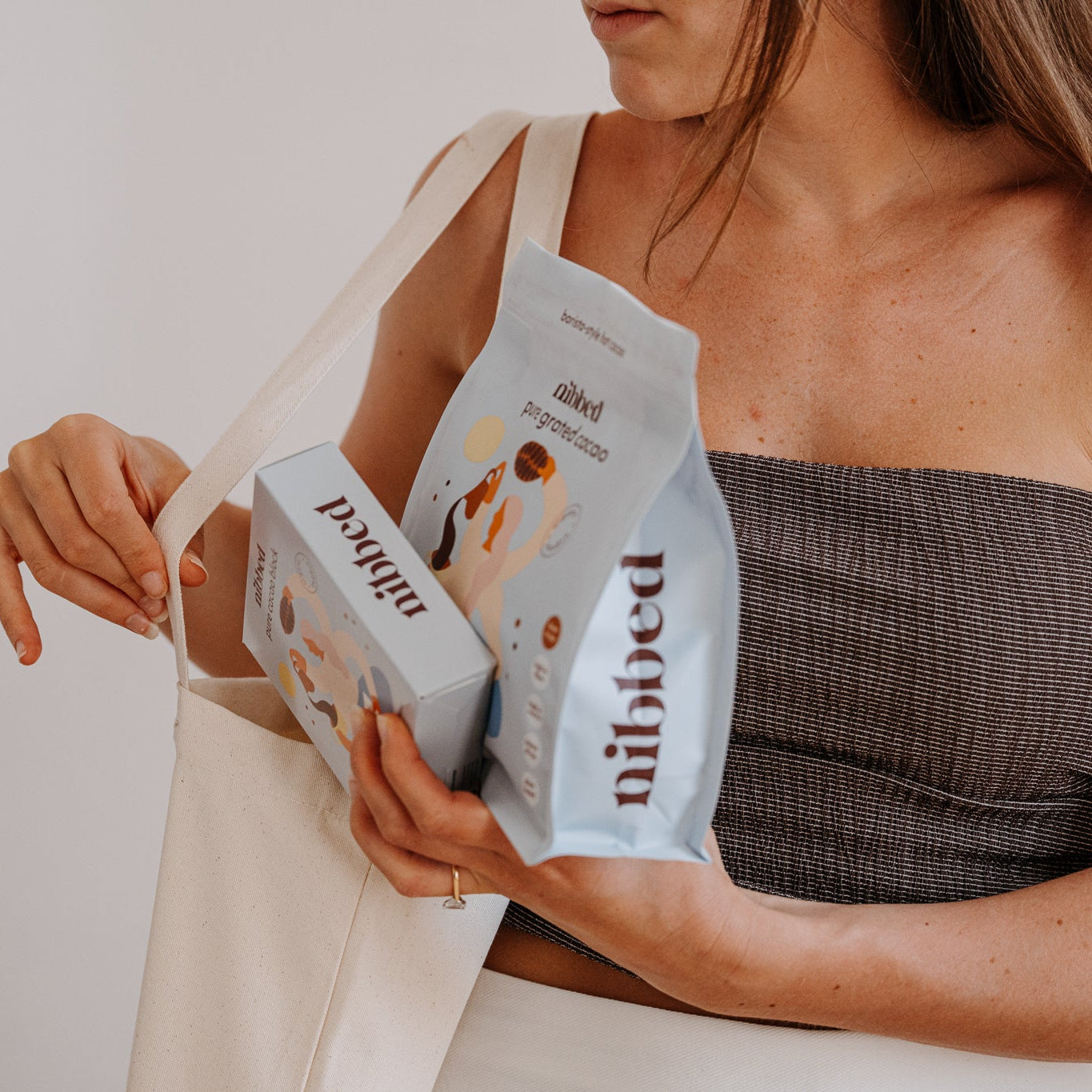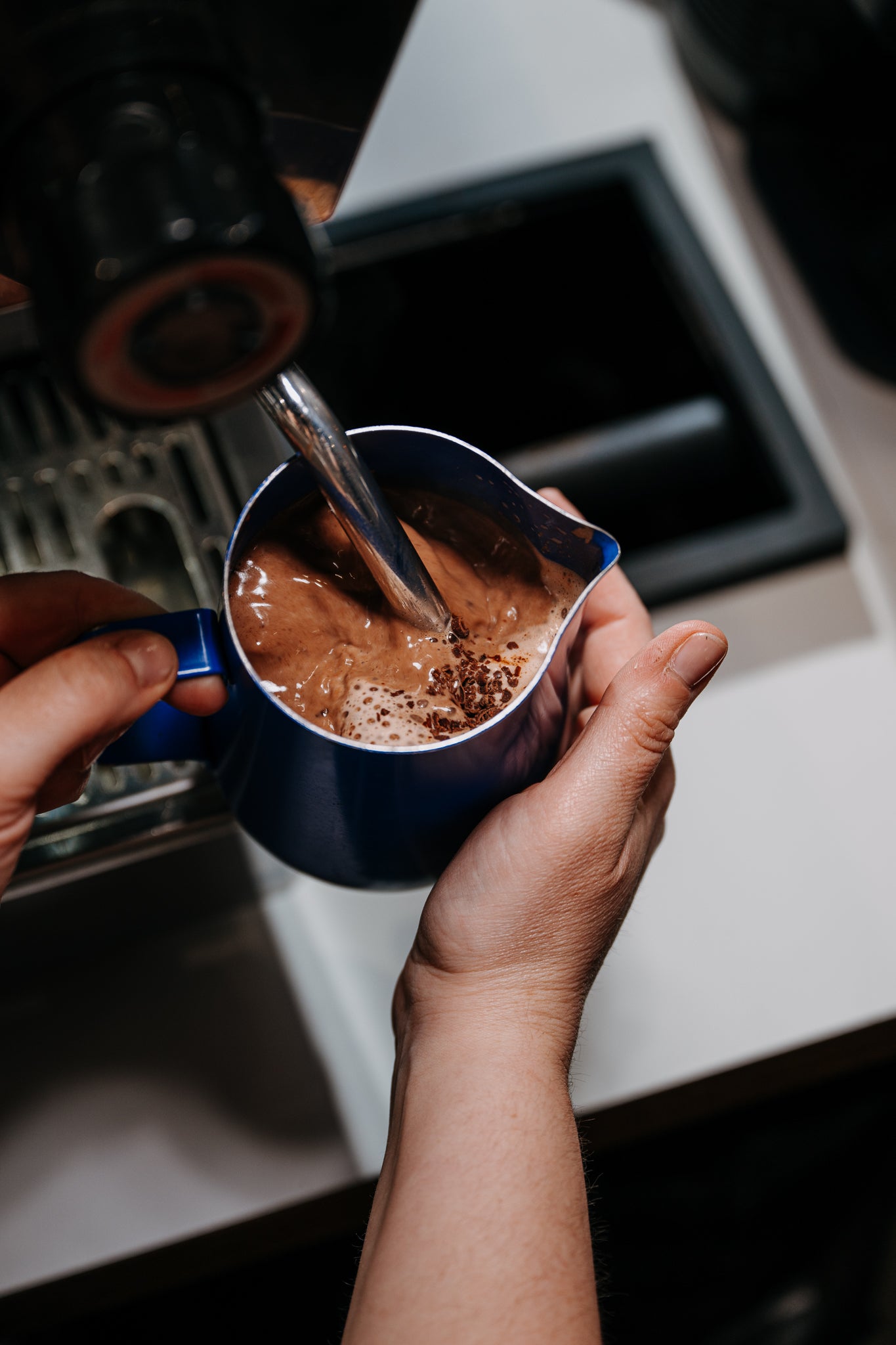
barista cacao
THE NOT COFFEE OPTION
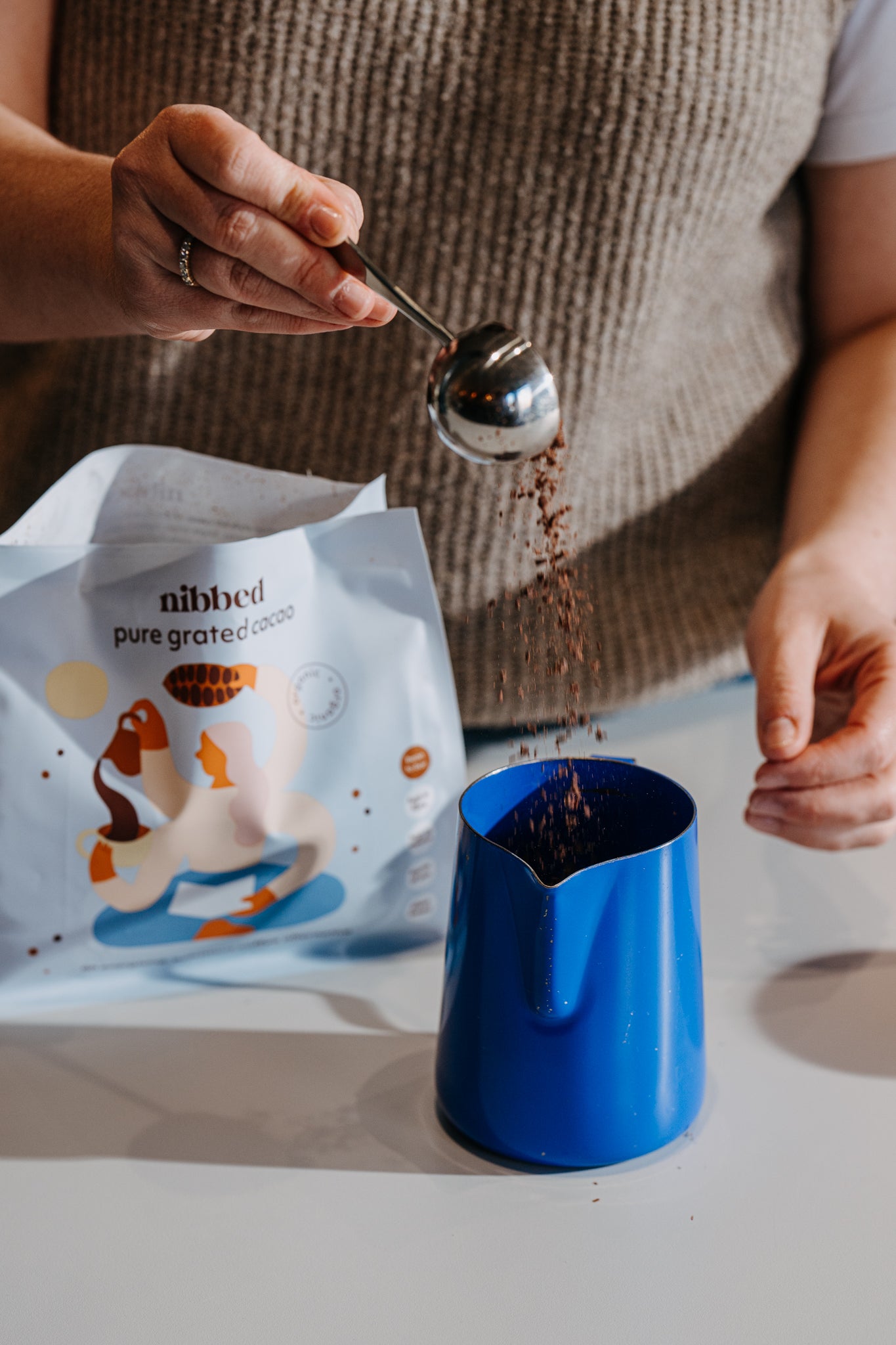
the not coffee menu
Customers have increasingly requested a healthy hot cacao option when they visit cafes.
Nibbed Hot Cacao offers a sophisticated alternative to overly sweet hot chocolate, perfect for those who don't drink coffee or are looking for a more balanced morning or afternoon pick-me-up.
why cafes love it
a new kind of ritual
LOW CAFFIENE COFFEE ALTERNATIVE
EASY to serve
BLENDS EFFORTLESSLY INTO MILKS
HOT OR ICED
SERVING SUGGESTIONS
calm energy
FOCUS WITHOUT THE CAFFEINE CRASH
know before you sip
-
Our beans have been tested and have 0.22% caffeine, which is less than a decaf coffee.
The main stimulant in cacao is called Theobromine. It's gentler, but a stimulant nonetheless.
Caffeine primarily affects the nervous system, hence the jittery feeling. Whereas theobromine primarily affects the cardiovascular system.
-
This very much depends on your tolerance for stimulants.
We recommend it in the morning as it contains a gentle stimulant called Theobromine. Some people are very sensitive, and would be awake at night if they drank cacao late in the day.
BUT many of our customers have it in late afternoon/ evening as they find it relaxing (it has a good source of magnesium).
-
We don’t label it ceremonial — because there’s no official definition. The term was popularised by a single brand about 20 years ago, and standards vary widely.
Some say ceremonial cacao must be criollo (ours is a criollo-trinitario hybrid). Others say it must be blessed by a shaman or made with strict intention.
Ours is organic, stoneground, and sourced from a regenerative social enterprise in the Dominican Republic — with no additives, no processing, and all the nutrients intact.
Made with intention, but not tied to ritual. It’s cacao for everyone.
-
This is very much up to you. We have a recipe here, and we would encourage you to experiment with what you like.
Some people love almond, coconut or soy milk. We love oat as it's naturally sweet. Some people love it with no milk, just water.
You can add spices like cinnamon, ground cardamom, chilli, ginger, or vanilla extract. Or food-grade essential oils like lavender, rose or wild orange (be very careful to only use a drop as they are super strong!).
And lastly, you can add sweetener if you like. Try maple syrup, honey, date syrup or coconut sugar. But we do suggest only a tiny bit of sweetener :)
-
It's honestly up to you.
If you're new to cacao we'd advise to start off with 15-20g per cup and then up the dose if you want it stronger. Our customers' preferences range from how much of a gram serving they use. Some have 15g, others will go up as high as 30g.
-
This one also depends on where you sit on the sweet-bitter spectrum.
If you're used to eating very sweet things, you add sweetener to tea/coffee and you don't tend to eat bitter foods then you will probably find cacao very bitter.
But if you're used to eating dark chocolate and not too much sweet stuff, you're more than likely going to find the cacao quite smooth and not too bitter at all.
If you do have a sweeter tooth, we'd recommend adding sweetener to your hot cacao or making it with all oat milk as that's naturally quite sweet.
But we do advise not to add too much sweetener. We, as a culture, need to stop sugarcoating everything (in our opinion :)
-
While coffee contains caffeine, cacao is rich in theobromine, a gentler stimulant. Both belong to the same family (methylxanthines), but work differently in the body.
Caffeine stimulates the nervous system, often leading to a spike and crash. Theobromine works through the cardiovascular system, promoting a slower, steadier energy without the jitters or headaches. It’s a more grounded kind of focus.
-
Cacao isn’t a powder, it’s pure, grated cacao which retains the good fat (cacao butter). Stirring won’t fully emulsify the cacao with your milk.
To get that rich, smooth texture, you’ll need to froth, whisk, or blend. It melts best with movement.
![Pure Cacao Grated [200g]](http://nibbedcacao.com/cdn/shop/files/NC-193_c7a1fc90-4d56-40d6-8b7d-56fd036451e7.jpg?v=1745068591&width=65)
![Pure Cacao Grated [500g]](http://nibbedcacao.com/cdn/shop/files/NC-168_67dcf7e8-50c1-4823-b782-e438cc4b86ac.jpg?v=1745068523&width=65)

![Pure Cacao Block [300g]](http://nibbedcacao.com/cdn/shop/files/Nibbed_Cacao_Block_300g_064abb3e-c390-4666-ae85-52298d2516a3.png?v=1749477474&width=65)








